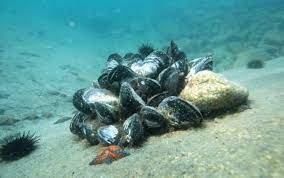An international team of researchers has identified a contagious form of cancer in Far Eastern mussels. The disease can negatively affect populations of the mussels, which are actively bred in Russia. The study was published in the journal Scientific Reports.

“form of cancer, in which the infectious agent is the cancer cells themselves, was first discovered in dogs in the mid-19th century. It was transmitted by a venereal route from a sick individual to a healthy one. In the 1990s, infectious cancer was discovered in the Tasmanian devil. It turns out that it occurs in only two mammalian species. Scientists used to think it was quite rare. However, today the picture of the world is changing – it appears that infectious cancer is very widespread among bivalves” – Maria Skazina.
Disseminated neoplasia is a massive fatal form of cancer of bivalves that can be compared to leukemia in vertebrates. In diseased mussels, cancer cells circulate in the hemolymph, which serves as blood. As neoplasia develops, they invade all tissues and organs, disrupting their function.
“Last year, a study was published that suggested a mechanism for cancer cell transmission between individuals. It turned out that when a mussel is stressed, its hemolymph cells can leave the body, exist for a while in the environment and penetrate other mussels. This process has been observed in healthy mollusks. It is possible that cancer cells use this very mechanism for infection, – says Maria Skazina. – However, this is only a hypothesis. Difficult experimental studies would be necessary to understand its validity”.
Two genetic lines of infectious cancer, BTN1 and BTN2 (from the English name of Bivalve Transmissible Neoplasia) have been described in the mussel genus Mytilus, the most important commercial invertebrate. Both are derived from the Pacific mussel Mytilus trossulus, which is found in the Far Eastern and Northern seas of Russia, among others.
“The BTN1 line is currently found only in one population of mussels on the Pacific coast of North America. At the same time, BTN2 is much more widespread – before our study, it had been recorded in mussels of other species in Europe and South America, but not in the parent species Mytilus trossulus,” says Maria Skazina.
In 2019, marine biologists from St. Petersburg State University, the A.V. Zhirmunsky National Research Center for Marine Biology and the University of Helsinki teamed up to look for contagious cancer in Russian seas mussels. To diagnose the disease, they developed an integrated approach, including cytological and molecular genetic tests, and applied it to mussels Mytilus trossulus from the Sea of Japan, in which disseminated neoplasia had previously been noted.
Neoplastic cells – large cells with polyploid nuclei and abnormal cytoskeleton resembling needles of a bristling hedgehog – were found in hemolymph of mussels from Gaidamak Bay near Nakhodka by flow cytometry and immunocytochemistry methods. Genotyping of hemolymph and other tissues by nuclear and mitochondrial traits revealed genetic “chimerism” – the presence of more than one individual genotype in sick mussels. Multiple alleles (different forms of the same gene determining the development of a particular trait) were separated by molecular cloning. All mussel patients were found to have “additional” genotypes corresponding to BTN2. Thus, for the first time, SPbSU scientists together with their colleagues proved the presence of BTN2 in Mytilus trossulus and contagious cancer in mussels of the Sea of Japan and the Northwest Pacific.
In the next stage of the study, the scientists compared the BTN mitochondrial gene sequences they obtained using molecular phylogenetics with all the homologous sequences of the mussels themselves stored in the NCBI gene bank. It turned out that mitochondria BTN2 most similar to mitochondria Mytilus trossulus from the Russian seas. Probably, that is where the “patient zero” – the mussel, which “gave birth” to this infectious cancer, lived.
It also turned out that BTN2 is present in Baltic Sea mussels as well. In 2014, Polish biologists found an unusual mitochondrial genotype in one Baltic mussel, which they interpreted as that of Mytilus trossulus. It is now clear that it was not the genotype of the mussel, but of BTN2. It turns out that the contagious cancer that scientists were looking for in the Far East could be found much closer to St. Petersburg. However, how widespread the disease is among Baltic Sea mollusks remains to be seen.
At present, scientists are still searching for contagious cancer in mussels in different seas of Russia. Preliminary data suggest that it does not occur only in mussels of the Sea of Japan and the Baltic Sea and that its diversity is not limited to the BTN2 lineage. They are also developing a method for rapid diagnosis of the disease for the purpose of monitoring it in natural and commercial mollusc populations.





